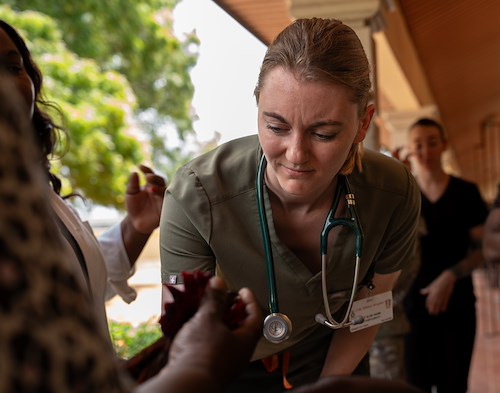Gallery contains 1 image
×
Photo 1 of 1
Noncombatant Evacuation Operation Tracking System training takes place here in Vicenza
Soldiers and civilians from U.S. Army Africa receive training on the Noncombatant Evacuation Operation Tracking System on Caserma Ederle, Vicenza, Italy, 29 – 30, October. The purpose of this training is for USARAF personnel to be able to efficiently track and manifest noncombatants in an emergency situation.
Photo by: Sgt. Jennifer Garza
Vicenza, ITALY – Soldiers and civilians from U.S. Army Africa receive training on the Noncombatant Evacuation Operation Tracking System currently utilized during Noncombatant Evacuation Operations on 29-30 Oct., Caserma Ederle, Vicenza, Italy.
The primary purpose of the NTS is to provide accountability of noncombatant evacuees by creating and maintaining a database of all noncombatants assembled during an evacuation operation. Subsequently, the noncombatants movement is tracked through the evacuation process and their data is transmitted to servers located at multiple locations; thus providing real-time information.
“The role of an NTS operator is to register, arrive, and manifest evacuees,” said Staff Sgt. April Turner, senior human resources sergeant. “They assist by transferring required data into the system in order to manifest personnel ensuring all personnel are accounted for.”
The NTS is a unique system used by Department of Defense and Department of State to manage the evacuation, transport and tracking of noncombatant U.S. citizens and certain third-country nationals while being evacuated from other countries.
“The NTS would be used in instances like natural disasters, civil unrest, and military conflict,” said Turner. “If there were ever a situation where US Military personnel, U.S. Military dependents, U.S. Government civilian employees, private U.S. citizens and their dependents, documented permanent residents, designated foreign national employees of the USG and their dependents, and designated foreign nationals would need to be evacuated then the NTS would be used. “
NEOs are conducted to rescue U.S. citizens, Department of Defense civilian personnel and other designated host nation and third country nationals, in response to natural disasters, man-made disasters or hostile attacks.
“It is important that we practice on these systems by doing mock evacuations,” said Sgt. Gabriela Maldonado, programs and policy non-commissioned officer in charge. “By doing this we can see how quickly and effectively the equipment runs and how operators can work together in a hostile environment.”





